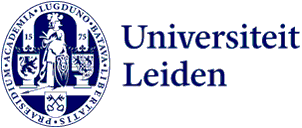
Grant enables archaeologists to study origins of museum artefacts
Two researchers from the Faculty of Archaeology have received a grant from the Museums, Collections and Society (MSC) interdisciplinary programme. This grant is for collection-based research. Jason Laffoon is using his grant for research into the origins of Central American turquoise, while Dr Marike van Aerde is using hers to study beads from Egypt.
Modern methods
Modern research methods make it possible to study archaeological objects without damaging them. This opens the way to examining the highlights of museums’ archaeological collections. One such method is XRF analysis, which determines the material composition of an artefact, as, for example, in Marike van Aerde’s research project. ‘We are using the Museums, Collections and Society grant to study a large collection of beads from the National Museum of Antiquities’ Egyptian collection’, says Van Aerde.

XRF
XRF can be used to see where the sand used to make glass beads comes from. ‘Then a collection that has been in a museum for a century can answer research questions about trade contacts, both interregional and over time’, says Van Aerde. She is working together with bead expert Mette Langbroek and XRF specialist Dennis Braekmans. ‘Dennis does the technical part, Mette and I look at the beads under the microscope and we then work together on the interpretative part.’

Turquoise
Jason Laffoon’s research is similar, although it focuses on a different region and material: turquoise from Latin America. ‘The first step will be to develop a technique known as laser ablation systems for turquoise. This will create opportunities to analyse artefacts in museums all over the world and should lead in the long term to an origin database for Central American turquoise’, he says.
The second part of the project involves gaining new insights into the geological origin of possible sources of worked turquoise mosaic stones from pre-Columbian America. ‘The project results should ultimately contribute to our knowledge of long-distance trade in turquoise both within Central America and between Central America and the southwest of the present-day United States’, Laffoon says.

Herkomst
The origins of the Egyptian beads are also being researched. ‘We are already seeing tremendous diversity’, Van Aerde explains. ‘From the initial research, we can see that only a small percentage come from Egypt itself. Many come from South India and Sri Lanka as well as Mesopotamia. In terms of dating, we are seeing all sorts: from early antiquity to the Middle Ages.’ Egypt therefore looks to have been more of a crossroads, with lots of material arriving and leaving. ‘The good thing about this research method is that there is a vast amount of material in museums that has never been studied in this way before.’
The Museums, Collections and Society grant aims to gradually change this.
Collaboration
One of the terms of the MCS grant is that the project must be a collaboration between a researcher from Leiden University and a member of staff from the organisation that holds the collection. In his project, Jason Laffoon is working with Jessica Hensel (Wereldmuseum) and Martin Berger (Faculty of Archaeology). Marike van Aerde is working with Lara Weiss (former member of staff of the National Museum of Antiquities) and Mette Langbroek and Dennis Braekmans (Faculty of Archaeology).
